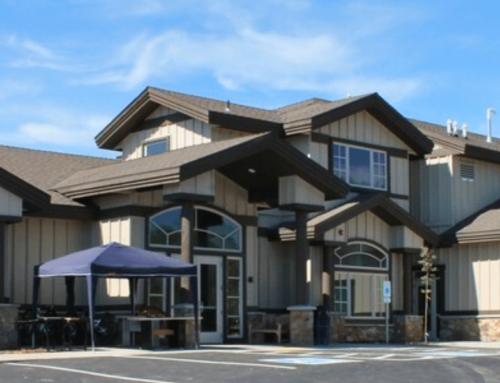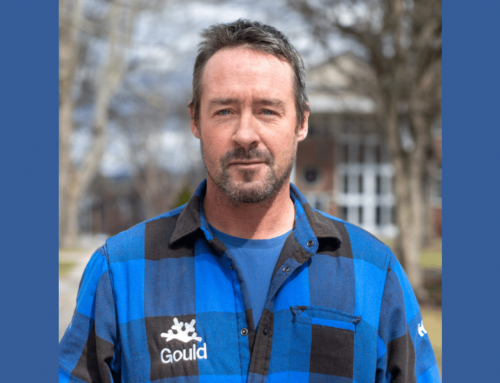Burke Mountain Academy Develops New Return to Snow Protocol
Alpine ski racing is an unforgiving sport. One second, you’re in complete balance carving the perfect turn. The next instant, you go over a blind knoll, get thrown off balance, catch an edge, lean back on your tails, tumble into the netting and if you’re unlucky, you end up spending the next 9 months recovering from a season-ending knee injury or broken bones.
“Over the course of of a ski season approximately 20% of alpine racers may suffer an injury skiing and requiring rehabilitation in preparation for their successful return to regular training and racing,” explains Adam Perreault, Burke Mountain Academy (BMA)’s head athletic trainer.
Given the nature of our sport, common injuries are sustained to the knee, the head, and low back. Recent specific injuries include ACL and MCL tears, tibia fractures, and concussions.
“Historically, we’ve measured injury recovery success through rehabilitation speed,” adds Darrell Gray, BMA’s high performance director. “While this approach may have been effective for National and Olympic level athletes, it’s been detrimental and has led to high re-injury rates and unsuccessful returns to competition especially at the adolescent, developmental level.”
To increase student rehabilitation success rates and reduce re-injury risks, BMA recently designed and piloted a pioneering, six-phase “Return to Skiing Protocol” (RTS). BMA’s RTS is based on the U.S. Ski & Snowboard’s SkillsQuest Model and leverages the internal expertise of BMA staff Gray, Perreault and athletic trainer Ali Spencer who work as a team to provide careful supervision of each injured athlete’s progression from the rehabilitation room, to the gym and all the way back to gate training.
“While preparing rehabilitation programs for some of our students, we realized we could leverage the US Ski and Snowboard SkillsQuest Assessment to give structure and provide a careful progression for an athlete’s return to skiing,” adds Gray.
For the on snow rehabilitation, the SkillsQuest model provides the basis for the technical progression. Ski selection (SL, GS, or all mountain) and snow surface (soft, packed, hard, icy) each add intensity, and length of session and run provide volume. The speed of progression through the SkillsQuest matrix is based on individual capability. All of these variables are layered to form BMA’s Return to Skiing Protocol.
“At the heart of the protocol is an emphasis on re-introducing the fundamentals of skiing – especially for lower limb injuries that require significant re-learning following a long period off snow,” adds Gray. “As such, the RTS protocol gives the athlete an opportunity to progressively re-acquire fundamental skiing skills and to take their time as they progress through their strengths and work on their technical weaknesses. This progressive approach also gives students the time to regain their confidence.”
For Spencer, the RTS protocol has provided great structure to guide and measure athletes’ progression in collaboration with both the athletes and their coaches.
“One of my roles as the RTS coach is to work with the athlete’s primary coach to combine their return to snow with their on snow performance needs,” she says. “This individualized programming focuses on specific skills development for each athlete while safely progressing their load.”
While recovery speed may not be at the heart of the protocol, Gray is confident the program’s philosophy emphasizing a more holistic, long-term minded approach to injury recovery, especially for developing adolescent athletes, could transform and improve return to skiing across the system.
“BMA has always been on the forefront of innovative thinking around adolescent athletic development, may it be for athletic preparation, on snow training, injury prevention, and also rehabilitation,” says Gray. “With this protocol, we’ve designed a program that bridges a gap that was not previously addressed specifically for adolescent return to skiing. Injuries will continue to be part of our sport, but if we can increase success rates of our athletes’ recoveries, we can extend the longevity of their careers and better prepare them to thrive at the next performance levels.”
BMA’s leadership in this area and the academy’s desire to share best practices has already prompted a national dialogue on the topic. In May, U.S. Ski & Snowboard held a symposium on return to skiing involving all of its high performance centers of which BMA was the first named.
“It’s rewarding to see that the projects we are initiating at BMA are having an impact on the whole system,” concludes Gray. “It’s at the core of our culture to tackle challenging problems using innovative approaches and we’re even more fired up when those advances can play a positive role on the development of young skiers across the nation.”
Release courtesy of Burke Mountain Academy.





















